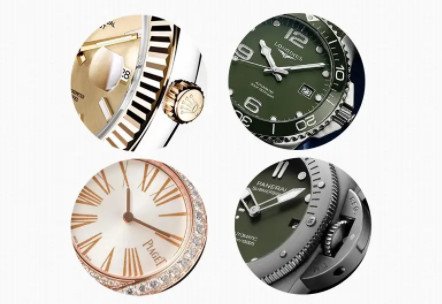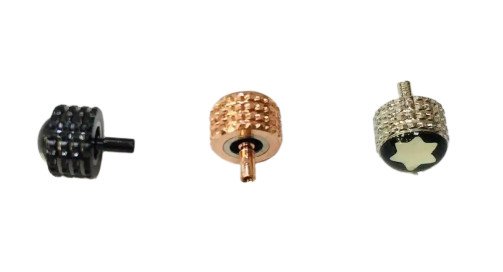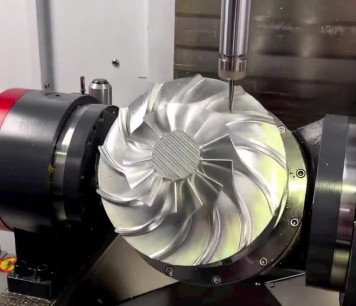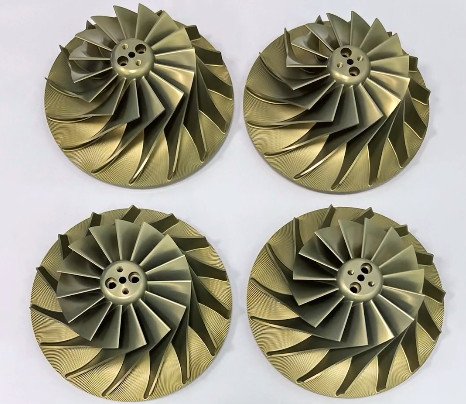The watch crown is a pivotal component in both mechanical and quartz watches, serving as the primary interface for setting time, date, and other complications, as well as winding mechanical movements. This article provides an in-depth exploration of watch crown types, shapes, and functions, with precise technical details and practical considerations. Designed for horology enthusiasts and professionals, it emphasizes functionality, engineering, and usability without delving into trends or innovations.
Overview of the Watch Crown
The watch crown, typically a small cylindrical or shaped knob on the side of a watch case, connects to the watch’s movement via a stem, enabling users to set time, date, or other functions. In mechanical watches, it also winds the mainspring to power the movement. The crown’s design, including its type, shape, and material, is engineered for durability, ergonomics, and water resistance, making it a critical element in watch functionality and aesthetics. This article details the various crown types, their shapes, and their specific roles in watch operation.

Types of Watch Crowns
Watch crowns are categorized by their mechanism and functionality. Each type is designed for specific watch styles and purposes, such as everyday wear or extreme conditions like diving. Below is a detailed breakdown of the primary crown types.
Push-Pull Crown
The push-pull crown is the most common type, found in most analog quartz and automatic watches. It features multiple positions (or “clicks”) that engage different functions. For example, in a watch with a date complication, pulling the crown to the first position typically allows date adjustment by rotating the crown to advance the date wheel. Pulling it to the second position enables time setting, moving the hour and minute hands. After adjustments, the crown is pushed back to its neutral position, securing it against the case.
Technical Specifications:
- Diameter: 4–6 mm (varies by watch size).
- Stem Length: 5–8 mm, matching movement depth.
- Water Resistance: Typically 30–100 meters, depending on gaskets.
- Operation Force: 0.05–0.1 Nm for pulling/pushing.
This crown type is user-friendly, requiring no additional steps like unscrewing, making it ideal for dress watches and everyday timepieces. Its simplicity ensures ease of use but offers limited water resistance compared to other types.
Screw-Down Crown
The screw-down crown is designed for watches requiring high water resistance, such as dive watches. It must be unscrewed counterclockwise before pulling to access adjustment positions. After setting the time or date, the user presses the crown against the case and screws it clockwise to create a tight seal, preventing water ingress. This mechanism often includes multiple gaskets for enhanced sealing.
Technical Specifications:
- Diameter: 5–8 mm for better grip.
- Thread Pitch: 0.5–1.0 mm for precise sealing.
- Water Resistance: 100–2000 meters, depending on design (e.g., Rolex Triplock).
- Torque for Screwing: 0.1–0.3 Nm to ensure a watertight seal.
Screw-down crowns are essential for watches used in harsh environments, ensuring durability and protection against water, dust, and pressure.
Push Crown (Pusher)
The push crown, or pusher, is typically used for specific functions, such as operating a chronograph. In chronograph watches, pushers start, stop, and reset the stopwatch, while a separate push-pull or screw-down crown handles time and date settings. In digital watches, pushers often replace traditional crowns, controlling all functions due to the absence of a winding mechanism.
Technical Specifications:
- Diameter: 2–4 mm (smaller due to single-function use).
- Actuation Force: 1–3 N for precise engagement.
- Water Resistance: 30–200 meters, depending on case sealing.
Pushers are common in sports and chronograph watches, where quick activation of functions is critical. However, they must not be operated underwater to maintain water resistance.
Shapes of Watch Crowns
The shape of a watch crown affects both its functionality and aesthetic appeal. Different shapes cater to ergonomic needs, watch styles, and historical contexts. Below are the primary crown shapes.
Straight Crown
The straight crown, often round with ribbed or knurled edges, is the most common shape in modern watches. The textured edges (knurling depth of 0.2–0.5 mm) enhance grip for precise adjustments. Some straight crowns are hexagonal, offering an ergonomic alternative for easier operation, particularly in sports or tool watches.
Applications: Dress watches, sports watches, and everyday timepieces.
Onion-Shaped and Conical Crown
The onion-shaped crown, named for its spherical, grooved appearance, is associated with vintage pilot watches and pocket watches. Its large size (6–8 mm diameter) allows easy operation. The conical crown, with a tapered, cone-like shape, was designed for early aviator watches, enabling pilots to adjust the watch while wearing gloves. Both shapes prioritize functionality in rugged or professional settings.
Applications: Pilot watches, vintage-inspired timepieces.
Cabochon Crown
The cabochon crown features a domed gemstone (e.g., sapphire, onyx) or polished glass on its top, adding elegance to luxury watches. The gemstone is cut flat at the bottom and convex at the top, with a diameter of 1–3 mm. This crown serves both functional and decorative purposes, enhancing the watch’s aesthetic appeal.
Applications: High-end dress watches, luxury timepieces.
Recessed Crown
The recessed crown is integrated into the watch case, creating a sleek, low-profile appearance. It maintains functionality while minimizing protrusion, ideal for minimalist or dress watches. The crown’s diameter is typically smaller (3–5 mm) to blend seamlessly with the case.
Applications: Minimalist watches, slim dress watches.
Functions of the Watch Crown
The watch crown’s primary role is to interface with the watch’s movement, enabling various functions. These functions vary by watch type and complexity, as outlined below.
Winding in Mechanical Watches
In mechanical watches, the crown winds the mainspring, storing energy to power the movement. For manual-wind watches, 30–40 clockwise rotations typically fully wind the mainspring, depending on the movement (e.g., ETA 2824-2 requires ~40 turns). In automatic watches, the crown supplements the rotor’s winding when wrist movement is insufficient. The torque required for winding is approximately 0.05–0.1 Nm to avoid overstressing the mainspring.
Time Setting
Pulling the crown to the time-setting position (usually the second click) allows the user to rotate it to adjust the hour and minute hands. Clockwise rotation is recommended to prevent gear damage. Some watches feature a hacking mechanism, stopping the seconds hand when the crown is pulled, enabling precise synchronization with a reference time (e.g., atomic clock). The force required for time setting is typically 0.05–0.1 Nm.
Date Setting
In watches with date complications, the crown’s first position often adjusts the date by advancing the date wheel. Users must avoid setting the date between 9 PM and 3 AM, as the movement’s date-change mechanism is engaged, risking damage. In some watches, cycling the hour hand past midnight changes the date. The date wheel typically requires 0.05–0.1 Nm of torque for smooth operation.
Specialized Functions in Complicated Watches
In complex watches, the crown controls additional complications. For GMT watches, it adjusts the local time hour hand independently of the GMT hand, useful for travelers. In chronograph watches, pushers integrated with or separate from the crown start, stop, and reset the stopwatch. These functions require precise engineering, with pushers needing 1–3 N of actuation force. Operating pushers underwater is avoided to maintain water resistance.
Common Issues with Watch Crowns
While watch crowns are robust, certain issues can arise from design, usage, or environmental factors. These include:
- Stripped Threads (Screw-Down Crowns): Over-tightening can damage threads, reducing water resistance. Regular maintenance prevents this.
- Gasket Wear: Rubber or silicone gaskets degrade over time, especially in dive watches exposed to saltwater, requiring replacement every 2–3 years.
- Stem Misalignment: Forcing the crown in the wrong position can bend the stem, affecting movement accuracy.
- Operational Difficulty: Small or smooth crowns may be hard to grip, especially for screw-down types or users with limited dexterity.
Regular servicing, such as gasket replacement and proper handling, mitigates these issues. Manufacturers address operational challenges with larger, textured crowns.
Technical Specifications of Watch Crowns
| Parameter | Specification | Notes |
|---|---|---|
| Diameter | 3–8 mm | Varies by crown type and watch design. |
| Stem Length | 5–10 mm | Matches movement depth; critical for alignment. |
| Thread Pitch (Screw-Down) | 0.5–1.0 mm | Ensures tight sealing; finer threads improve water resistance. |
| Water Resistance | 30–2000 meters | Depends on crown type and gaskets. |
| Operation Torque | 0.05–0.3 Nm | Lower for push-pull, higher for screw-down crowns. |

Conclusion
The watch crown is a cornerstone of watch functionality, enabling time setting, winding, and complication control. Its types—push-pull, screw-down, and pushers—cater to diverse needs, from everyday wear to deep-sea diving. Crown shapes, such as straight, onion, cabochon, and recessed, balance ergonomics and aesthetics. Understanding these elements, along with their technical specifications and potential issues, provides insight into the crown’s critical role in horology. Proper use and maintenance ensure its longevity and the watch’s reliability.



